Tips for growing cucumbers "Masha F1": how to get a good harvest in winter
Cucumber is the most common vegetable that gardeners plant. Therefore, breeders are trying to develop more varieties with universal characteristics. One of these achievements was the hybrid Masha f1. It has excellent taste, disease resistance and other positive qualities.
Description
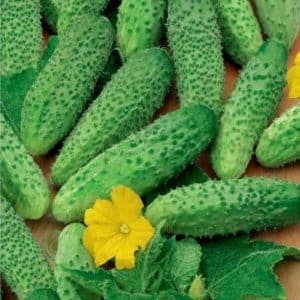
Masha f1 is a Dutch hybrid from MONSANTO HOLLAND B.V. It was entered into the State Register of Russia in 2000 without indicating the region, that is, cultivation is possible throughout the country. The hybrid is grown in open ground or a greenhouse-type shelter.
Masha f1 is characterized by super early ripening. You can count on the first fruits 40-45 days after the sprouts appear.
Medium-sized bushes with limited shoot formation, which facilitates the formation of lashes. The leaves are also small, green and dark green in color. The nodes have from 3 to 7 ovaries. The type of pollination is parthenocarpic, that is, self-pollinating.
Reference. Humanity has been eating cucumbers for more than 4,500 thousand years.
Advantages and disadvantages
Masha f1 cucumbers are the best of many first generation hybrids. Their main advantages:
- early maturation;
- limited branching;
- resistance to many diseases and pests;
- beautiful and even shape of gherkin-type fruits (small);
- long fruiting;
- good taste and preservation of density during preservation;
- Possibility of transportation without loss of taste.
Minuses:
- faint cucumber aroma;
- hard skin of the fruit;
- may overgrow and lose quality if the crop is not harvested on time;
- the fruits cannot be used for seeds, because they are hybrid and, when replanted, will not pass on their qualities to the new generation.
Fruit characteristics and yield
The size of the cucumbers is 8-10 cm, in diameter - from 3 to 3.5 cm. Weight - about 100 g. The shape is cylindrical. The color is dark green. The skin is dense, coarsely tuberous. The taste is mild, without bitterness.
Productivity is high. Up to 15 kg of cucumbers are harvested from 1 m² in greenhouse conditions. In open ground the figures are slightly lower - 11-12 kg.
How to grow
To grow high-quality Masha f1 cucumbers, you need to take into account the nuances of selecting and sowing seeds and further caring for the plants.
Preparation, sowing seeds and growing seedlings
To plant a hybrid, it is important to choose the right place and prepare the soil. Consider a few tips: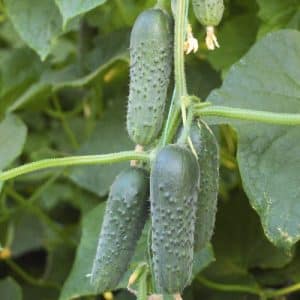
- choose a sunny place, without drafts;
- prepare the soil with a low acidity level and a high humus content;
- Apply manure to the ground in the fall.
Before sowing, the seeds must be treated, but the manufacturer of Masha f1 took care of this and applied the Tiram pesticide to them to suppress fungal spores. The germination rate of the hybrid is 95%.
For seedlings, seeds are sown in separate pots to avoid picking, which cucumbers do not like. The soil can be taken ready-made, of a universal type - it is suitable for any vegetables. Sold in the store.
The seeds are planted in a container, deepened by 1 cm. Then covered with film and placed in a warm, bright place. Watering is carried out as the top layer of soil dries. The lighting is left for 10-12 hours; if necessary, special lamps are used. You can take a regular one, installing it so that the light falls on the seedlings.
Important! Do not place seedling containers close to each other. Close proximity promotes the development of diseases: powdery mildew, blackleg.
Fertilize cucumbers 1-2 times before planting in the ground. 1-2 weeks before placing the seedlings in a permanent place, they are gradually hardened off.
Good cucumber seedlings have the following properties:
- strong bush 25-30 cm high with short internodes;
- 5-6 dark green leaves;
- age – no more than a month after germination;
- there is an extensive root system.
It is not advisable to transplant seedlings from soil to soil. After this, the plant suffers for a long time and lags behind in development. The ideal option is to grow in peat cups or peat tablets. These cucumbers grow better after transplanting.
Masha f1 is a heat-loving hybrid. It should be planted in open ground taking into account weather conditions - at the end of May or beginning of June, when the weather is warm and frosts are not expected. As a last resort, purchase covering material to cover young plants.
The soil should also be warm. In insufficiently warmed soil, seeds will not sprout, and seedlings will grow slowly or die.
The planting scheme is as follows: the distance between the rows is 70 cm, the seeds are placed in grooves every 10 cm. When the first leaves appear, the plantings are thinned out, leaving 20 cm between them.
Attention! Do not plant Masha cucumbers in places where groundwater is close.
Potatoes, tomatoes, legumes, cabbage or onions are considered successful predecessors of cucumbers. But cucumbers cannot tolerate beets and zucchini, because they pull all the beneficial substances from the soil.
Hybrid bushes form into 1 stem. Each bush is tied to the trellis with a rope. All lateral shoots, tendrils, lower and drying leaves are removed.In the first 4 nodes, the ovaries are also torn off; in the next 4, a leaf and 1 ovary are left. Then in 10-12 nodes there are 2 leaves and ovaries, and in the next 10-15 nodes 3 leaves and ovaries are left.
Fertilizers and watering
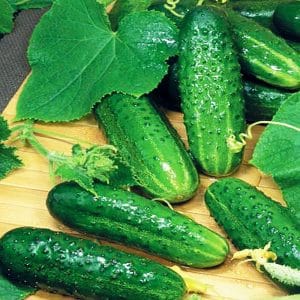 Masha f1 cucumbers need watering, weeding, loosening and fertilizing. The beds are watered in the morning and evening, while the sun is not very hot. This will allow the plant roots to absorb more moisture.
Masha f1 cucumbers need watering, weeding, loosening and fertilizing. The beds are watered in the morning and evening, while the sun is not very hot. This will allow the plant roots to absorb more moisture.
Irrigation water is left to settle so that it becomes warm and clears of chlorine. Then the soil is loosened to saturate it with oxygen. At the same time, weeding is carried out. Loosen carefully, trying not to touch the roots.
Fertilize the hybrid Masha f1 with a solution of mullein and ash or with special mineral complexes for feeding vegetables, following the instructions. Fertilizer is applied for the first time when 2 leaves appear on the sprouts. The next 2 feedings are carried out 2 weeks apart.
In the greenhouse
Masha f1 is perfect for greenhouse conditions. To harvest a good harvest of cucumbers in a greenhouse in winter, create the necessary microclimate.
There must be heating. But it takes a lot of moisture, so in order to humidify the air, they put containers with water and wash the floor and walls.
In winter, the sun does not heat, natural light is weak, so it is necessary to use electric lamps - without them, growing is impossible. They are immediately placed low above the seedlings, and then, as they grow, raised higher.
Seeds are planted at a temperature of 25 °C. After germination, the temperature is maintained at 15 °C during the day and 12 °C at night. Seedlings are fertilized and watered 2 times a day.
The seedlings are planted in a greenhouse at a temperature of 25 °C. The distance between plants is 20 cm, and between the rows - 90 cm. The greenhouse is ventilated during the day.The temperature should not be allowed to drop below 10 °C, otherwise the plants will stop bearing fruit.
For good health and rapid formation of ovaries cucumbers need feeding once every 2 weeks. Before flowering, plants are watered 2 times a week, and afterward watering is carried out every other day. But if the leaves begin to fade, you need to water immediately.
Important! In a greenhouse, cucumbers are grown only on a trellis.
On the windowsill
Since the Masha hybrid is self-pollinating, it can be grown at home in winter. The container for planting must be voluminous - at least 5 liters per plant.
Tips on how to properly grow cucumbers on a windowsill in winter:
- the window sill or balcony should be placed on the south, east or west side, but not on the north;
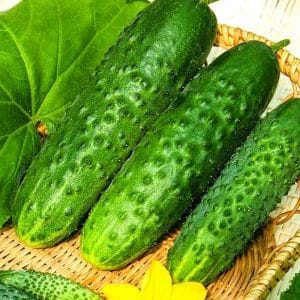
- on cloudy days, you need to illuminate the cucumbers with fluorescent lamps at least 2 hours a day;
- the optimal temperature for growing is 21-23 °C;
- You need to water regularly, spray the entire plant once every 7 days;
- fertilize with mineral fertilizers once a week;
- rotate the pot with the plant so that it receives light from all sides;
- when pulling the stems, they need to be tied up;
- avoid drafts and cold, seal all cracks in window frames.
Prevention of diseases and pests
Hybrid Masha is able to resist some diseases, but not all, so it is important to carry out disinfection on time.
Diseases:
- Powdery mildew. It is characterized by the appearance of a white coating on the leaves. For treatment, colloidal sulfur and Isofen are used.
- Anthracosis. Its difference is brown spots on the leaves and stems. Before planting, the soil is watered with Bordeaux mixture to reduce the risk of disease.
- Root rot. It can attack cucumbers at any age.In diseased plants, the stem gradually becomes thinner and dies. Prevention is achieved by following agricultural practices. Diseased bushes are destroyed, and garden tools are treated with disinfectants.
The plant is attacked by the following pests:
- Spider mite. The heat-loving insect appears on all vegetables grown in a greenhouse. An infusion of potato tops (1-2 kg infused in 10 liters of water for 3 hours) is suitable as a folk remedy. The safest chemical among chemicals is Keltan. Sprayed in the evening when the soil is moist.
- Whitefly. It can be recognized by a sooty coating similar to mold. The pest is eliminated using chemical preparations “Aktara” or “Kinmiks”. But after processing, you need to wait 10-12 days for safe consumption of cucumbers.
Reviews from gardeners
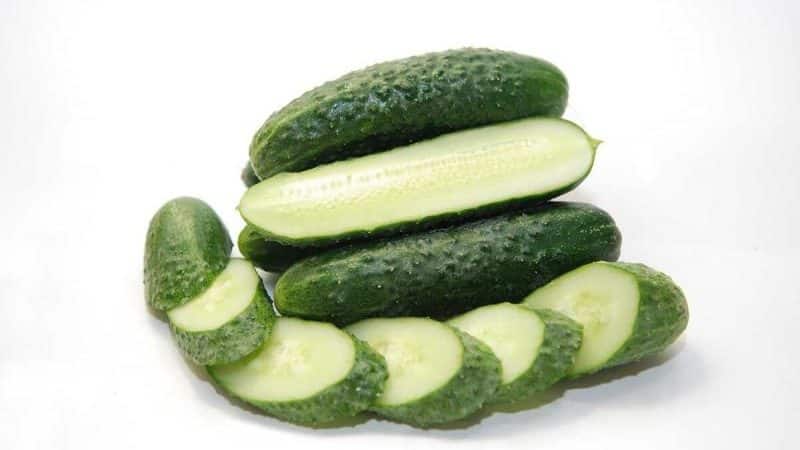
Reviews about this hybrid are mostly positive. Many note its early ripening and good yield. Among the negative qualities, thick skin and weak aroma were noted.
Natalya, Krasnodar: “The cucumber hybrid Masha is very reliable. I’ve been growing them on my plot for several years in a row and don’t have any problems. They grow well and bear fruit well. Suitable for eating and canning with tomatoes.”
Nina, Chelyabinsk: “I buy the seeds of such cucumbers every year and plant them first in peat pots and then in a greenhouse. The fruits are small and beautiful, as in the photo on the package. Excellent for preservation, as the skin is dense. They taste a bit sweet, but we like them.”
Mikhail, Astrakhan: “The first time after fruit set, I spray the plant with the preparation “Ovary” and then 2 times until the end of the season. They grow until frost. There are a lot of cucumbers: enough to pickle them and give them to friends.”
Conclusion
Masha f1 is the leader among cucumber varieties and hybrids in terms of characteristics and descriptions. Its merits were appreciated by many gardeners - both amateurs and experts. It is also ideal for growing in winter in a special greenhouse or on a windowsill at home.
By providing the plant with proper care, you are sure to get a large harvest of tasty and crispy cucumbers in summer and winter.